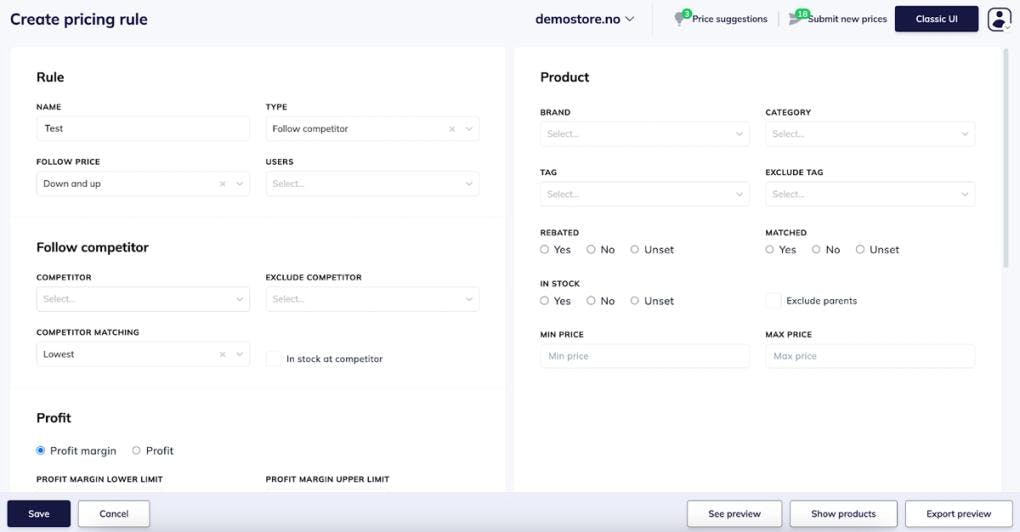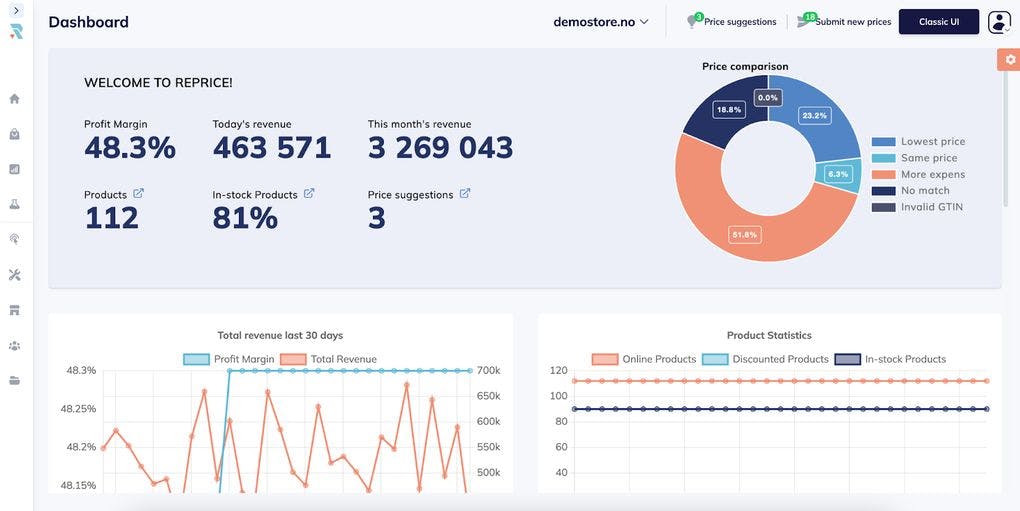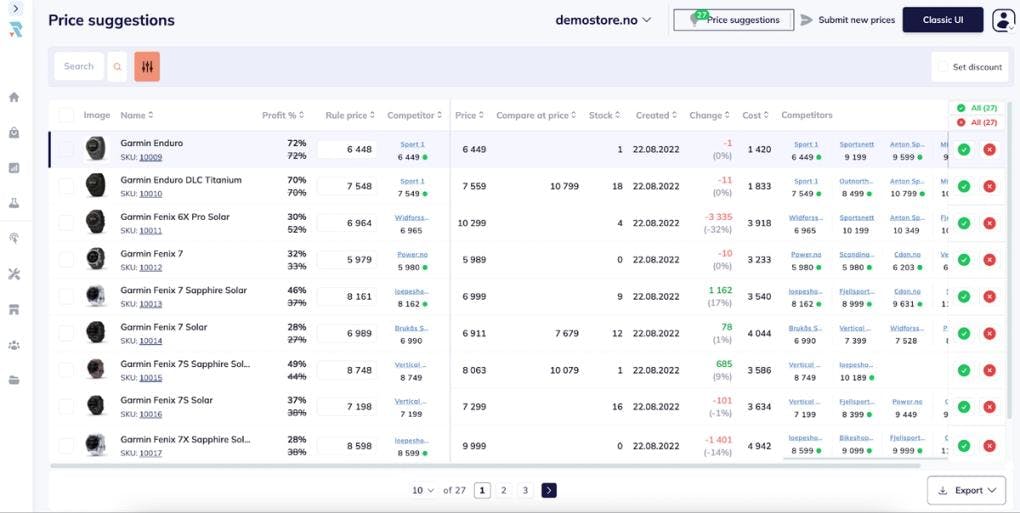How To Use Price Penetration To Grow Market Share, A 5-Step Guide
April 15, 2024 | 10 minutes read
Say you’re the e-commerce manager of a small electronics company and you’re launching a brand new smartphone in a market that's saturated with tons of already established big names and brands.
Sure, your new phone has cutting-edge features and a brand new design that doesn’t look like the other models out there. But getting noticed by new customers, who are already loyal to other (bigger), more known brands, is a challenge.
How do you successfully break through the noise, grab customers’ attention, and take a solid position in your market?
Enter the concept of price penetration. A pricing strategy where you offer your new product (in this case smartphone) at a surprisingly low price initially, captivating potential customers' attention but also give them a reason to consider switching brands.
In today’s e-commerce world, where new products and brands emerge every day, implementing a price penetration strategy is worth testing. The reason being it could quickly become your golden ticket to more success.
In this article, we’ll break down what the strategy is, why you should consider it, and how to implement it effectively.
In this article:
- What is a price penetration strategy?
- Why you should choose a price penetration strategy
- Balancing low pricing with sustained profitability
- Our guide to mastering price penetration
- Conclusion
What is a price penetration strategy?
Price penetration is a strategic way to enter a market, where you initially set your product or service prices lower than those of competitors - or the perceived market value.
Why does this work? It helps to grab attention and pull in new, potential customers - and gently persuade them away from the brands they've been loyal to, or most likely to buy from.
But it's not all about playing the cheapest game in town. Instead, it’s about striking that perfect balance with a good price that's enticing - yet still sustainable - for your business. Because you probably don’t want to compromise your brand’s profitability or value.
So, what’s the secret to doing this successfully? We suggest you start by conducting market research. Take a good look at what your competitors are pricing, and what the general pulse is of your market.
You want to set a price that pulls customers in because the deal is just too good. And hopefully, get them to keep coming back.
At the end of the day, price penetration is about catching the eye of new (and existing customers) that are looking for real value.
Why choose a price penetration strategy
Let's break down the three big wins of using a price penetration strategy.
Here’s why it’s a smart choice for companies that want to be successful when rolling out new products:
1. It enables a quick market entry
Price penetration can be your company’s accelerator for quick and easy market entry, letting you quickly carve out a significant share. How? By offering more attractive price points than competitors from the start.
By introducing significantly lower prices from the get-go, your company can disrupt the existing market dynamics, shake things up a bit and attract a wider customer base. At the end of the day - you’re closer to establishing a stronger brand visibility.
2. You’ll win customers’ hearts
By starting out with attractive, lower prices, you already lay the groundwork for long-lasting customer relationships. Why? Because it's designed not just to attract customers but to retain them, ensuring they remain loyal even as prices are adjusted (up or down).
A study of over 17,000 shoppers highlights the power of this strategy: Great customer service triples the likelihood of them making multiple purchases. It even quintuples the chance they'll recommend your brand to someone else.
So with this kind of strategy, you’re focusing on building a base of customers that appreciate the value your brand consistently offers, which then can help secure repeat business and get people to spread the word about your brand.
3. You’re making the most of more sales
When you set your prices just right to bring in more customers, you naturally sell more. And this increase in sales helps you save money on each item you make or sell because the costs are spread out over more products.
This creates a smart balance - it keeps prices attractive to customers but still lets your company make a good profit. In addition, selling more gives your company more info about what customers like, what the current trends are - helping them tailor their pricing processes even more.
The result? A boost in market position, and it can help improve your bottom line.
How to balance low pricing with sustained profitability
When testing out price penetration, it's crucial to strike that delicate balance between attracting customers through low pricing - but also making sure that your company remains profitable and that you don’t “lose” anything from testing out the strategy.
That will typically involve a few key steps:
- Having efficient cost management: It’s important to keep a tight lid on expenses to make low pricing actually doable.
- Making gradual price adjustments: Once you've reached a good market share, you can slowly start to raise your prices. But make sure your customers know why it's worth it.
- Increase the perceived value: Offer great customer service, go above and beyond, Improve your product or add new features to justify any price increases.
Our guide to mastering price penetration: A step-by-step
So, what's the best way to go about price penetration? Here’s five easy steps to follow:
Step 1: Benchmark your competitors and analyze your market
First things first - get a clear view of where your company stands in the market, and directly compare with your competitors. You need to get a good overview and understanding in order to set the right prices.
Which might be easier said than done, which is where you can leverage the abundance or pricing tools and technology available today.
With Reprice, for example, you can access live competitor data, all in real time.
Which means you can forget the old days of juggling Excel sheets and custom tools that eat up time and resources while still missing the mark on accuracy.
And by providing real-time competitor insights directly to your ERP or platforms like Big Query, you can make swift, informed adjustments to your pricing. Which are accurately based on current market trends.
In other words, ensuring fresh data and tailored relevant strategies.
Step 2: Setting up your initial dynamic pricing strategy
Once you've got the lay of the land, it's time to set your initial pricing strategy. Ideally, you want to set up a dynamic pricing strategy.
This is where tools like Reprice steps in. With rule-based automation, you can set prices that adjust dynamically according to criteria like market demand, costs, and how competitors are pricing.
For example, you can set rules targeting specific brands, categories, or tags, and even opt to track a particular competitor, aim for minimum margins, or tweak prices based on market movements.
The result? Enabling a strategy that makes sure your starting prices are not just attractive but can smartly (and quickly) adapt to market changes. Which in the end, strikes a good balance between pulling customers in and maintaining profits.

Step 3: Monitor market response and adjust your prices
Once you’ve gotten your new pricing strategy up and running, it's highly recommended that you “watch” your market's reaction closely to see how the prices are received.
With Reprice's dashboard, this “birds eye view” gives you a comprehensive overview of sales trends, customer preferences, and market demand.
That way you’re not just making pricing decisions on a whim, instead you’re making data-informed decisions on adjusting prices. Which will help you stay competitive and profitable.
All in all, always monitoring your market and making strategic price changes help you keep pace with the market and safeguard your market share.

Care to see this in action? Feel free to book a demo today and see how you view your specific compitor’s data, tailor your pricing strategies and grow e-commerce revenue.
Step 4: Gradually increase your prices to more profitability
Once you've built a solid customer foundation and your brand gains traction, it's time to start thinking about boosting your profitability by increasing your prices, in the most strategic way possible.
Once you’re ready, use tools like Reprice to make both manual and automated, rule-based adjustments.
These tools are finely tuned to market feedback and consumer loyalty, ensuring increases are gradual and well-received.
As a bonus, Reprice simplifies updating prices across the board—whether for specific brands, categories, or tags, and even directly from supplier recommendations.
The result?
Streamlined, cohesive updates both online and in physical stores with electronic price tags. AKA, minimizing human error and saving you tons of time.

Step 5: Keep on adapting your pricing
Last, but not least: As markets constantly change, so must your pricing strategy.
With daily price recommendations available in pricing optimization software, you can ensure your pricing strategy remains dynamic and competitive. These suggestions are grounded in the latest trends, any changes in demand, and competitor movements. That way you actually know what’s going on instead of just guessing.

Conclusion
So, to wrap up: If you want to master the art of price penetration, you have to make smart moves and always evolve with the market.
Our tip is to start out with appealing prices to attract new customers, then carefully increase them. This can help maintain value and simultaneously build more customer loyalty.
Tools like Reprice make it easier, guiding you through competitor analysis, setting dynamic prices, monitoring responses, and making adjustments.
The process is straightforward: Analyze, set prices, watch the market, adjust, and keep adapting.
All in all, keep it agile, keep it informed, and watch your market share grow. Ready to get started with Reprice? Book a demo here.
Robin Frugaard Jørgensen
Chief Commercial Officer at Reprice
Robin Frugaard Jørgensen is Chief Commercial Officer at Reprice. Prior to joining Reprice in January 2023, Robin spent several years working with pricing strategies in B2B & the consumer electronics industry. Connect with Robin on LinkedIn here or book a demo to see how Reprice can solve your e-commerce pricing challenges.
